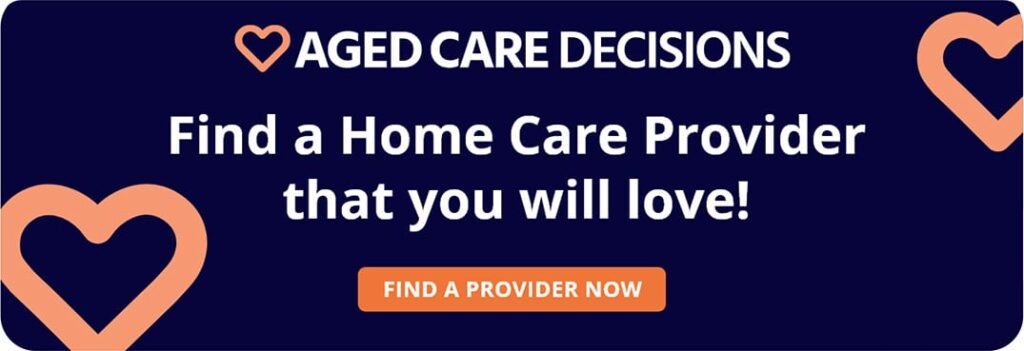An aged care assessment is the first step you need to take to access government-funded aged care services. On 9 December 2024, ACAT and RAS assessments were replaced by a new Single Assessment System for aged care. Let’s look at how the Single Assessment System works, and how the changes may affect you and your loved ones.

What is the Single Assessment System?
The Single Assessment System is the new national process used to assess older Australians’ eligibility for government-funded aged care services.
It’s designed to create a simpler, more consistent way to determine what care and support someone needs at home or in residential care.
Under the Single Assessment System, all assessments are carried out by a single workforce. These trained professionals visit you at home (or in hospital, if needed) and use a standardised tool to assess your physical health, cognitive ability, living situation, and care preferences.
Your assessment outcome is used to:
- Confirm your eligibility for aged care services (including Support at Home)
- Assign you a care classification, which determines your level of funding
- Help build a personalised care plan that matches your goals and support needs
The new system aims to reduce delays, remove duplication, and ensure people receive the right level of care sooner.
You can request an assessment by calling My Aged Care on 1800 200 422 or applying online at myagedcare.gov.au.
Why did aged care assessments change?
The 2018 Royal Commission into Aged Care Quality and Safety recommended a raft of changes to how aged care is delivered in Australia. The Single Assessment System is one of the major reforms needed to deliver a simpler, fairer, and more responsive aged care system.
Other recommended aged care reforms, including the new Support at Home program, have been pushed back until 1 November 2025 to give providers more time to prepare their clients, support their workers and get their systems ready for the changes.
Read more about Support at Home: Support at Home Guidelines
The revamped Single Assessment System was introduced in December 2024 so you and your loved ones can benefit from:
An assessment system designed to simplify the process
Regardless of the level of care you need, you’ll now start your aged care journey at the same place as everyone else, and with the same team: the My Aged Care national assessment team.
When you apply for subsidised aged care services you will meet with the My Aged Care team, who will follow, record, and track your care needs as you age. Then, when your needs change, or you choose to transition between services (for example, you want to move from home care into residential aged care) you won’t need to start over.
This longer-term, consolidated approach aims to make navigating aged care more streamlined and reduce waitlist times to deliver faster access to services.
Read more.
Only one comprehensive assessment for all types of care
Under the previous system, when your care needs changed, you would have to go through another round of assessment to access a higher level or different type of care. Now, if you need to move from basic home help to needing more intensive care, your single assessment team has you covered.
One comprehensive assessment now determines your eligibility – across the board – for entry-level home support (like cleaning or meals), more coordinated home care support, a residential aged care placement, and short-term respite care.
Fairer Assessments using an Integrated Assessment Tool
The My Aged Care assessment team now uses an integrated tool that standardises how care needs are measured. Every older person is assessed the same way, no matter who they are or where they live, making the system fairer.
The Integrated Assessment Tool helps the assessment team evaluate your needs by looking at your:
- Physical health and mobility
- Cognitive function
- Emotional wellbeing
- Social supports and living environment
It captures your personal preferences and lifestyle goals, not just your medical or functional needs. This gives you more say in the kind of supports you receive, and helps you have more control over both your short and long-term care planning.
True continuity of care
Under the “old” system, seniors were assessed by separate teams for different levels and types of care. For many people this resulted in gaps in service, repeated assessments, and inconsistent information being used for care planning.
The Single Assessment System delivers a centralised storage system that keeps a complete and up-to-date profile of your care needs, goals, and preferences. All your providers can work from the same assessment and care plan when coordinating your services.
This means you can experience true continuity of care, as your information will follow you as your needs change and you transition through different types of care.
Aged Care Decisions’ 100% free aged care support service can help you navigate all stages of your aged care journey. Here’s how our service helps tens of thousands of Australian families secure aged care providers they love.
Our custom software can take your care needs, location, budget, and personal preferences and match you with available home care providers in your area. We can then send you a tailored options report that you can use to compare different home care providers quickly and easily.
Who is eligible for an aged care assessment?
Australians aged 65 years and older, or 50 years and older for Aboriginal and Torres Strait Islander people, can apply for government-subsidised aged care services.
My Aged Care have an eligibility checker on their website, that lets you quickly check whether you meet the requirements for an aged care assessment before you apply.
How do I organise an aged care needs assessment?
You can organise an assessment online here: Apply for an aged care assessment | My Aged Care or by calling My Aged Care on 1800 200 422.
A doctor or other health professional can also refer you to My Aged Care for an assessment.
What happens during an aged care assessment?
A member of the My Aged Care assessment team, usually a nurse, social worker, or health care professional, will interview you to check your physical and mental health.
They’ll look at the way you manage day-to-day activities and speak with you about what aged care services will be best to help you.
An aged care assessment is usually conducted in your home and can take between 1-3 hours, depending on the complexity of your care needs.
The interview is like a friendly conversation, and there are no forms for you to fill out. Some people ask a trusted friend or family member to join them. This is a great idea for people who get overwhelmed by lots of information and questions.
What does an aged care assessment cost?
Nothing. Aged care assessments are funded by the Australian Government.
How to prepare for an aged care assessment
Starting the aged care journey can be a daunting experience for families.
We have prepared this quick 6 step guide to help you prepare for your aged care assessment and know what to expect.
Find and compare aged care providers
Your aged care provider should deliver personalised, high-quality support and services to help you live your best life as you age. If your provider isn’t measuring up, now is a great time to explore your options.
Our 100% FREE service can match your location, budget, care needs and personal preferences with aged care providers that suit your specific needs.
Our service is 100% FREE, 100% independent, and 100% personal.
We do all the running around for you, with less stress and hassle, and at ZERO cost to you.
Connect with us here to get started.







